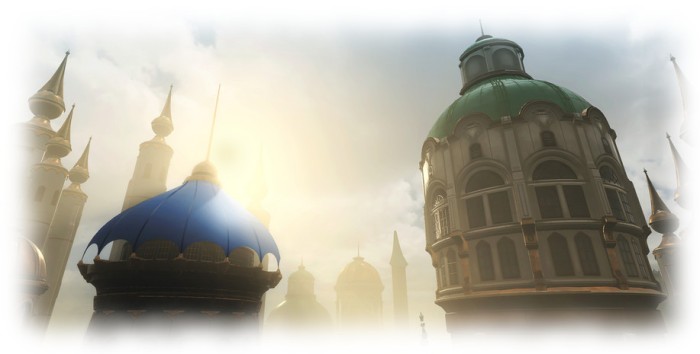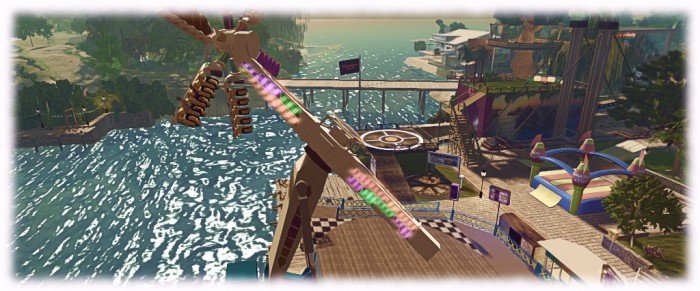
On July 4th, I noted USA Today’s video short on Project Sansar and the Lab. At the time, I indicated that there didn’t appear to be a related article to go with the video. However, that’s now changed, and Ed Baig, USA Today’s tech reporter, has indeed written an article to sit alongside the video, which appeared on July 6th under the title Second Life’s creators try for a third — in virtual reality.
“Third”? You may wonder. “What third?” The answer is something of a play on words – Linden Lab’s “first life” is (like the rest of us) firmly rooted in the physical world, where it sits as a corporate entity employing over 200 staff, 75-ish of whom are focused on Project Sansar (the rest doubtless made up of those managing Second Life, running Blocksworld, taking care of the company’s administration and management and (potentially) working with Tilia Inc.). Their “second life” is, obviously, Second Life itself, thus leaving Project Sansar as the company’s nascent “third life”.

As with the video, the article doesn’t reveal much that is new about Project Sansar itself per se, however, it does delve more into the concept of “social VR” – the term that Linden Lab and the likes of High Fidelity,AltSpace VR (both of whom are also mentioned in the article) and Facebook are increasingly using to define their new platforms.
In the case of Sansar, this “social” element is not just about people together who are already engaged in the virtual domain, but in allowing the creators of the environments hosted by Project Sansar to directly attract their own audiences to the experiences they build.
At this point, it’s probably worth diverting slightly and stating something that by now I would hope would be straight out of the British Guide to Stating the Bleedin’ Obvious, particularly for those who have been following Project Sansar’s development, but is worthwhile repeating just in case.
And it’s this: as with various other aspects of discussing Project Sansar, “creator” actually has a wider context than perhaps it does within Second Life. In the latter, by-and-large, we tend to regard “creators” as the folk who design and make the goods we use to dress our avatars and furnish our land. Outside of lip service, it’s perhaps not a term closely linked with those who obtain land and regions in SL and use these goods to create and environment. However, with Project Sansar, it is pretty clear “creator” is intended to encompass both: it applies to both those who can build and model with the tools supported by the platform, and those with the desire to “build” an environment they can share with others, even if “build” refers more to shaping the land and obtaining content designed, made and supplied by others.

In his article, Ed Baig illustrates this, together with the concept of “social VR” and the ability for experience creators to be able to attract their own audience by quoting the idea of learning the French language:
If you search Google for “I want to learn French” you might find in the search results a virtual reality experience in Sansar where you can actually “go to virtual places in France, meet French people and have French dialogue at the boulangerie,” Altberg says.
This actually brings up another point – and one I really must remember to ask the Lab about next time I have the opportunity to do so. And that’s the idea of Project Sansar as a “white label” environment. This was first mentioned back in early 2015, and hinted at in interviews since. If it is still a central aim for the platform, then it could be a powerful aspect to Project Sansar, allowing experience creatorsattract audiences through gateways they define and in a manner such that the audience isn’t even aware they are entering an environment hosted by Linden Lab or is something of a relative of Second Life.
But I digress; Sansar as a white label platform is a topic for another article (and one long overdue to appear in these pages!). In terms of the USA Today piece, the social aspect is further touched upon with the idea that in the future, people from geographically disparate locations will be able to meet and work together far more easily in virtual spaces than up to now has been possible (thanks largely to the work in facial and body tracking, which allow avatars to be a lot more nuanced and expression in their reactions to others).
Elsewhere, the idea of the potential “cannibalisation” of Second Life by Project Sansar is touched upon. This has been a controversial statement when raised in the past. However, while it is true that Second life thus far in its history faced serious competition, the times really are now changing, and just because SL hasn’t yet faced a competitor capable of luring its user base away doesn’t mean that at some point in the medium-term future it won’t. As such, references to the risk of “cannibalisation” shouldn’t be taken as a sign the Lab is in any way willing to “sacrifice” Second Life on the alter of Sansar, but rather that it is a pragmatic acknowledgement that the risk actually now does exist for Second Life to be supplanted in people’s hearts and minds, and thus, for the sake of the Lab’s own survival, better it came from within than from without.
Like the video before it – which is included at the head of the article, there’s nothing here that’s particularly revelatory about Project Sansar for anyone who has been keeping abreast with developments on that platform. However, the overview of the “social VR” approach is worth a read in and of itself. While for anyone who has not thus far dipped a toe into the waters of Project Sansar, Ed’s piece offers a pretty good starting point in understanding what it is about.







